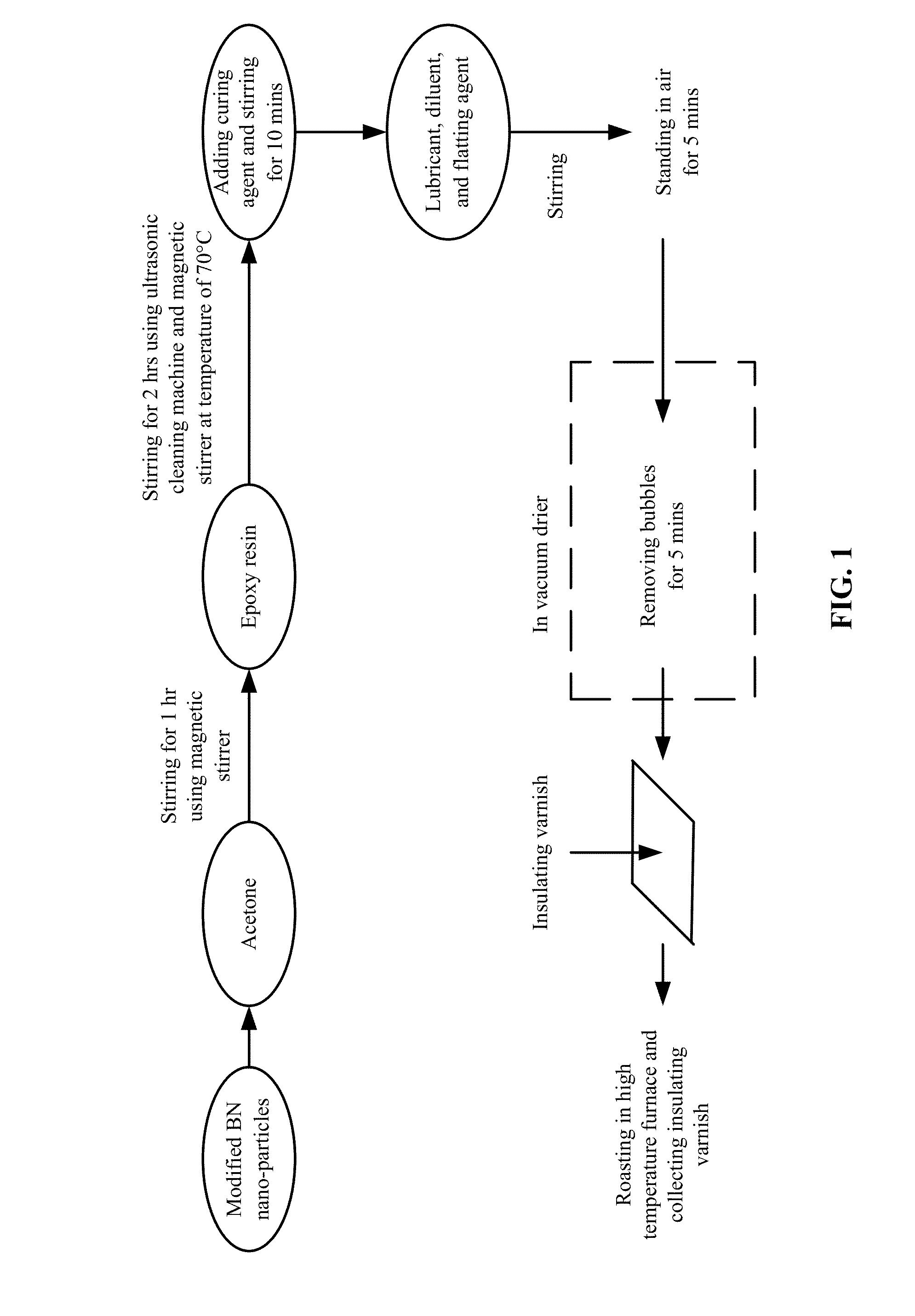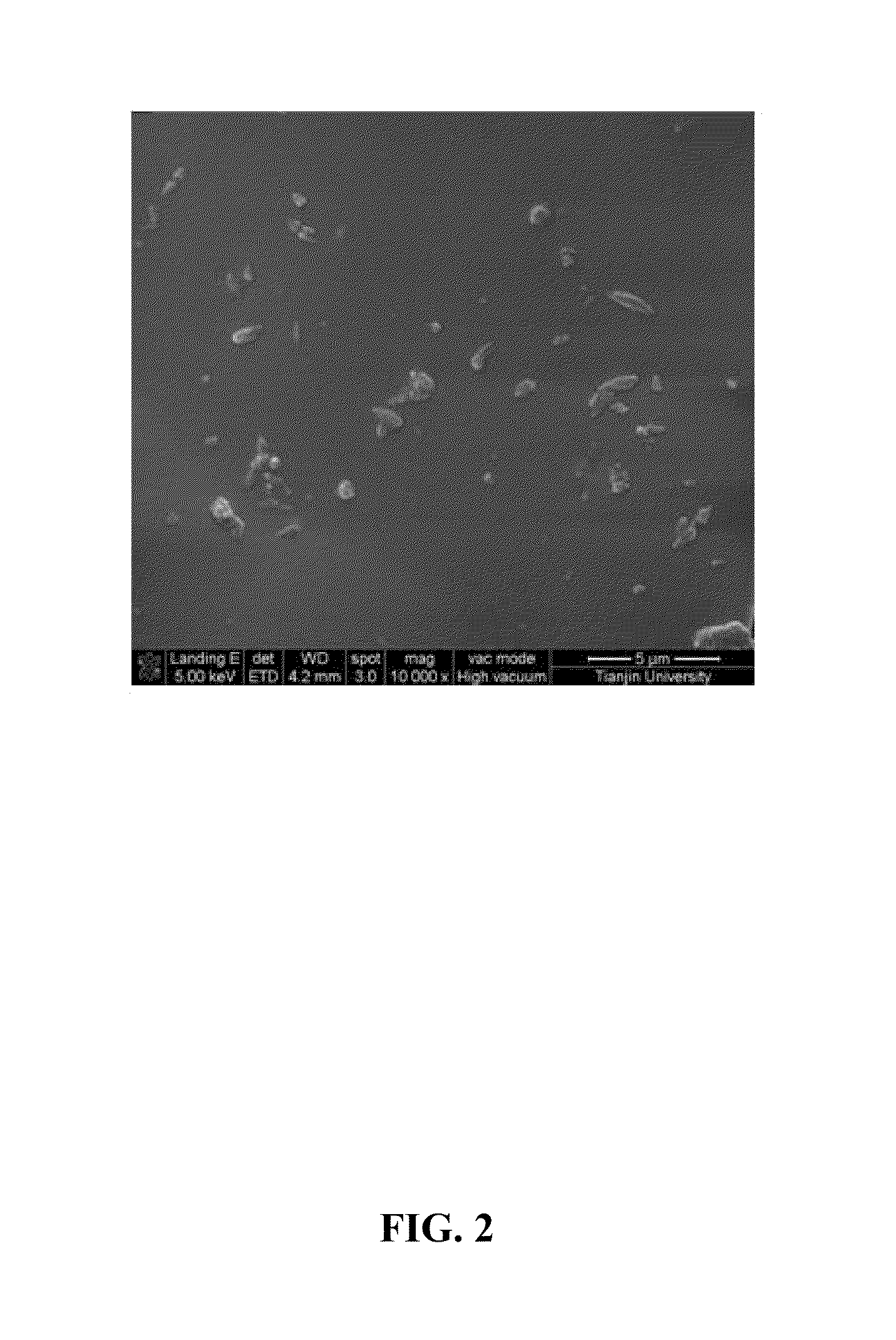Method for preparing insulating varnish
a technology of insulating varnish and nanocomposite materials, which is applied in the direction of plastic/resin/waxes insulators, transportation and packaging, coatings, etc., can solve the problems of inapplicability of insulating varnish, application of the method, and difficulty in uniform dispersion, so as to achieve high practicability
- Summary
- Abstract
- Description
- Claims
- Application Information
AI Technical Summary
Benefits of technology
Problems solved by technology
Method used
Image
Examples
example 1
[0048]A method for preparing an insulating varnish, the method comprises the following steps:[0049]a) providing equivalence of an epoxy resin solution having a concentration exceeding 99 wt. % and an acetone solution having a concentration of 40 wt. %, adding silane coupling agent KH550-modified hexagonal boron nitride (BN) having a particle size of between 200 and 250 nm to the acetone solution, stirring the acetone solution for between 1 and 1.5 h, a dosage of the BN accounting for between 25 and 30 wt. % of the epoxy resin solution;[0050]b) mixing the epoxy resin solution and the acetone solution and stirring, and dispersing a resulting mixture using an ultrasonic cleaning machine at a temperature of between 65 and 70° C. for between 2 and 2.5 h;[0051]c) adding as a curing agent low molecular weight polyamide resins to the mixture, and stirring the mixture using a magnetic stirrer to allow the curing agent to be dispersed uniformly, a dosage of the curing agent accounting for bet...
example 2
[0059]A method for preparing an insulating varnish, the method comprises the following steps:[0060]a) providing equivalence of an epoxy resin solution having a concentration exceeding 99 wt. % and an acetone solution having a concentration of 40 wt. %, adding silane coupling agent KH550-modified hexagonal boron nitride (BN) having a particle size of between 200 and 250 nm to the acetone solution, stirring the acetone solution for between 1 and 1.5 h, a dosage of the BN accounting for between 25 and 30 wt. % of the epoxy resin solution;[0061]b) mixing the epoxy resin solution and the acetone solution and stirring, and dispersing a resulting mixture using an ultrasonic cleaning machine at a temperature of between 65 and 70° C. for between 2 and 2.5 h;[0062]c) adding as a curing agent low molecular weight polyamide resins to the mixture, and stirring the mixture using a magnetic stirrer to allow the curing agent to be dispersed uniformly, a dosage of the curing agent accounting for bet...
PUM
| Property | Measurement | Unit |
|---|---|---|
| particle size | aaaaa | aaaaa |
| particle size | aaaaa | aaaaa |
| temperature | aaaaa | aaaaa |
Abstract
Description
Claims
Application Information
 Login to View More
Login to View More - R&D
- Intellectual Property
- Life Sciences
- Materials
- Tech Scout
- Unparalleled Data Quality
- Higher Quality Content
- 60% Fewer Hallucinations
Browse by: Latest US Patents, China's latest patents, Technical Efficacy Thesaurus, Application Domain, Technology Topic, Popular Technical Reports.
© 2025 PatSnap. All rights reserved.Legal|Privacy policy|Modern Slavery Act Transparency Statement|Sitemap|About US| Contact US: help@patsnap.com



